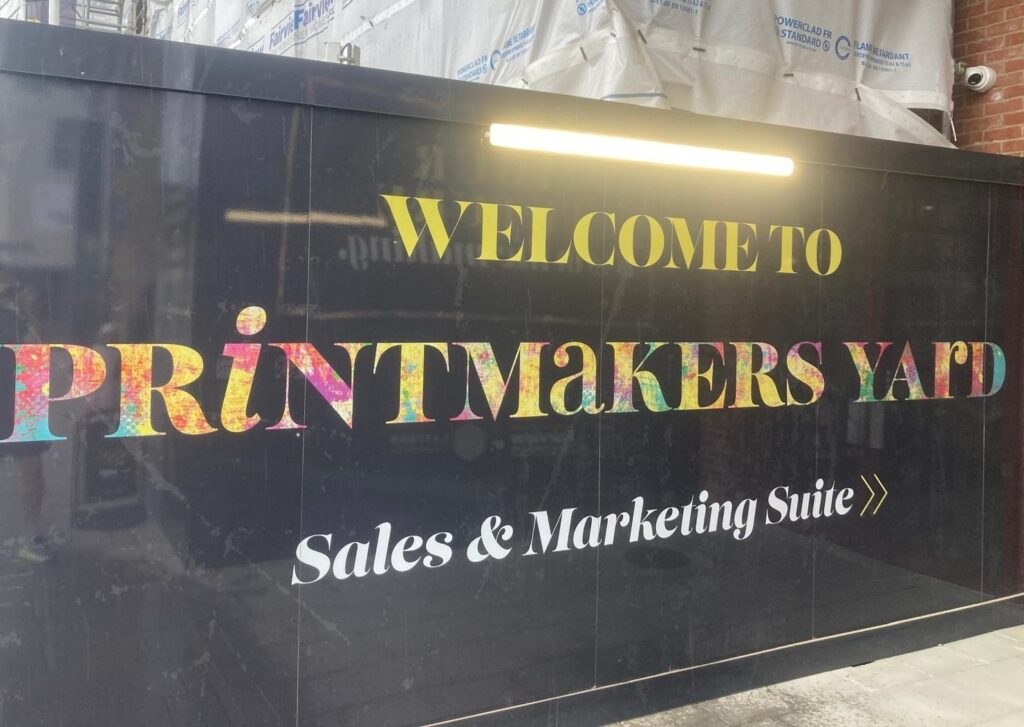Print may have long since lost its mantel as the fastest and cheapest mass communication media, but it remains a powerful way to communicate the stories that matter. And as much as technology is a constant challenge to the industry – it’s also being harnessed to drive it forward.
There’s a route I run regularly, near where I live in south west London, that takes me past a little bit of print industry history – the old Heidelberg site in Brentford.
When I first started running that way, along the Brentford canals, by the Thames, during the 2020 lockdown, the Heidelberg factory was still there. For a long time it was empty, before being gradually demolished. And then, when the demolition was complete, an enormous block of flats – still under construction – started going up in its place.
The site is unrecognisable now, but the connection to print is forever preserved in the new building’s name: Print Makers Yard.
Working as I do, at a communications agency with a 40-year heritage working with companies in the print industry, it got me thinking about print’s changing, and increasingly challenged place in the communications landscape.
Print can lay claim to being the first true mass communication media, and it’s difficult to overstate its significance. In 1998, Time Life selected Johannes Gutenburg’s printing press of the mid-15th century as the most significant invention of the 2nd millennium, and it’s not hard to see why. It democratised literacy and education, fueled the Reformation and the Renaissance; it turbo charged an era of scientific discovery, and enabled news to be mass distributed for the first time. So much of what we take for granted in the world we know today, would simply not have been possible without the level of knowledge sharing that was first made possible by print.
In the Western world, from the arrival of Gutenburg’s press, until the advent of broadcast radio in the early 20th century, there was really nothing to rival print as a tool of mass communication. And even as both radio and TV grew in popularity throughout the 20th century, they showed no sign of supplanting print media altogether, but rather seemed to operate very much alongside it.
With the arrival of the internet in the 1990s, however, and then social media in the 2000s, it was another story. Here was instant, accessible, and often free-at-point-of-use, media that print could not hope to compete with on either price, accessibility or speed of delivery. The era of print as the mass communication media (after half a millennium) was over.
So what now?
No industry has any absolute right to continual existence, no matter how long it’s been around. Modern history, from the industrial revolution to the AI revolution of today, is littered with industries transformed or reduced to a mere shadow of their former selves by the unstoppable march of technology.
The challenges are considerable, and there are unquestionably aspects of the industry in decline. But for 40 years, at AD Communications, we’ve had the privilege of telling countless stories of an industry embracing technology to spur itself on to greater heights: from the micro-droplet dispersal of inkjet printheads, to the harnessing of AI and automation for speed and accuracy, to advancements in ink and toner chemistries to produce colours that are ever more vibrant and true.
Print may no longer be the default communications choice for reaching lots of people quickly, but it’s increasingly proving itself a useful way to cut through the digital noise and convey a level of quality and seriousness, and to encourage a deeper level of engagement. Something technology is helping it to do ever more efficiently and effectively.
At AD, we’re in the storytelling business. It’s an overused phrase in marketing communications in some ways, but I still like it, and I use it because it’s true. Living in a digital age means that the opportunities we have at our disposal to tell our stories have grown exponentially. I love the creative freedom that offers us. I love that we can create a video and post it on social channels, or that we can record a podcast, or create a website, or write a blog (like this one). But as a storyteller, I also know that for those stories that you really want people to stop for; the ones you want them to really care about and take their time over; for the stories you want them to hang onto, and refer back to; for the stories you really want them to remember: there is still print.
And though we work with clients across a number of industries and sectors, I love that our heritage is in the industry that first made storytelling, at scale, possible.
